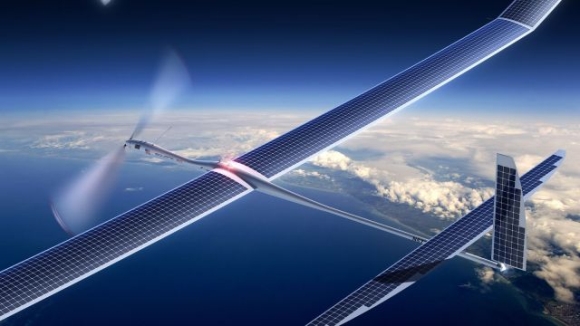We bet you haven’t heard from the Google’s X labs; an olive branch of Alphabet that has been busy experimenting with robots, self-driving cars, glass (now scrapped) and our topic of discussion today, Project Skybender.
Under the watchful eye of CEO Astro/Eric Teller – who comes from a long line of bright minds – since 2010, Google X has been toying with these high-altitude solar-powered drones for four years.
And the latest reports claims that they are testing internet-delivering drones.
The report coming from the Guardian suggests that Google has been testing out these drones in New Mexico. Flight-testing is currently taking place in the Spaceport America hangar that they share with Virgin Galactic. Two aircrafts apparently exist a commercial one that can be optionally piloted named the “Centaur” and the “Solara 50” plane that relies on solar panels. Both were supplied by Titan Aerospace that were acquired in 2014.

It is reported that the Google X team is equipping these drones with technology to experiment with the millimeter-wave radio transmitters and will aim to place these drones around the world to deliver 5G internet around the globe.
According to the 5G classification by the FCC, 5G speeds range from 1Gbps and 10Gbps – that’s 40 times faster than 4G LTE. For these drones to do so, the engineering team are battling with distance and signal propagation issues that come accompanied in delivering these higher frequencies.
Adding this to Project Fi’s ensemble would do wonders to their cellular network but before they manage to place these millimeter-wave transceivers in smartphones, Google is placing the stationary antennas around the test site.

This is pretty much a more space-age attempt compared to Google’s Project Loon balloon that hopes to do the same thing. That particular system allows 4G LTE speeds beamed down through a hot-air balloon. If you want to check out this balloon yourself, you’ll have to travel to India, New Zealand or Brazil.
You can check out the Project Loon video below:
With this technology, Google will provide hard to reach places with internet access. Who knows what possibilities lie beyond the horizon if you could easily get mobile signals in a base camp in Tibet or in the vast Gobi desert. We all want to be connected after all.







